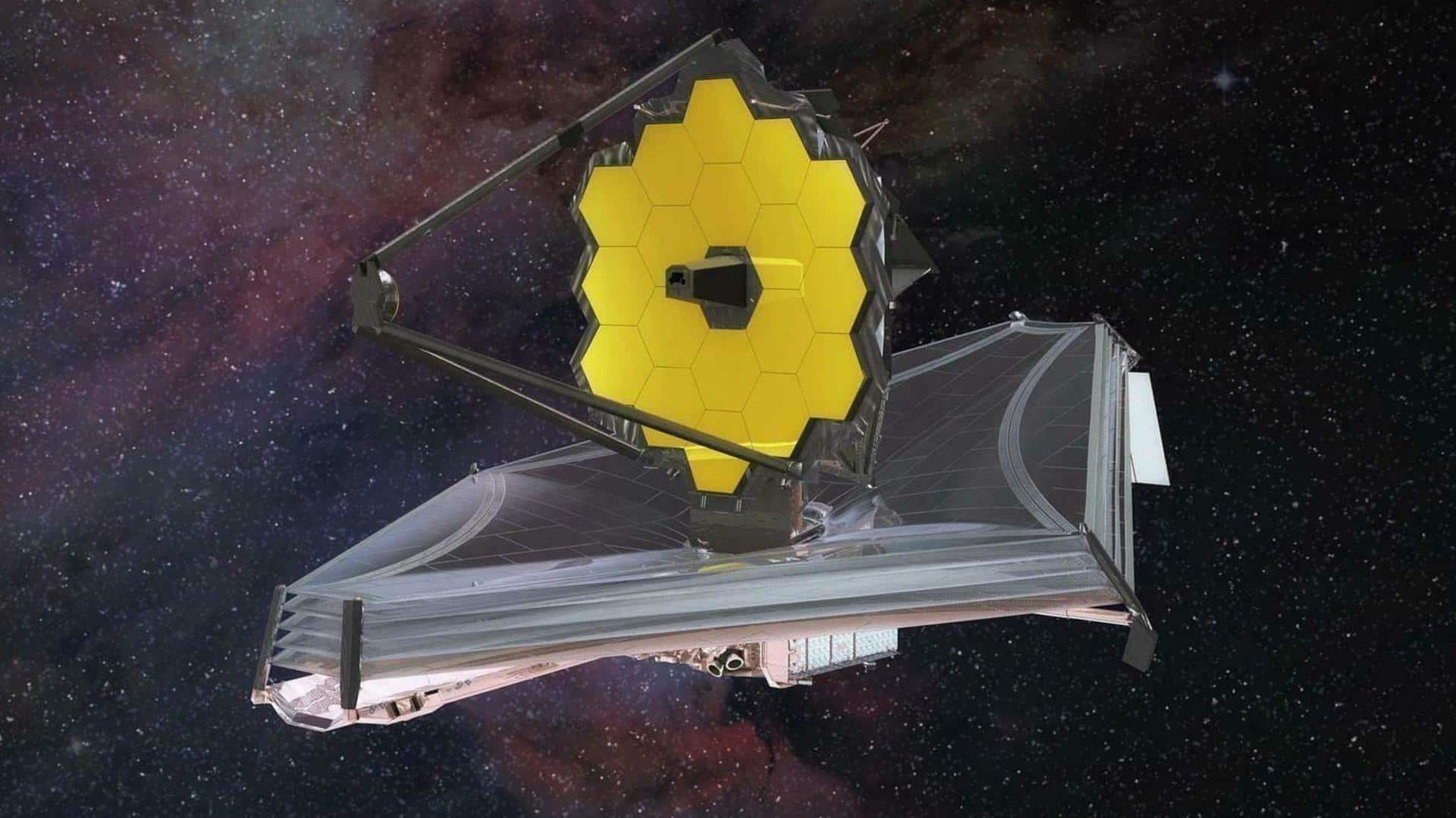
JWST's recent discoveries: From alien asteroid belt to early universe
What's the story
The James Webb Space Telescope (JWST) has been providing spectacular glimpses of the cosmos since it commenced operations.
Equipped to see infrared wavelengths of light, Webb stuns us with amazing observations from time to time, providing views of the universe we have never seen before.
Here we take a look at some of the recent findings of the powerful space observatory.
Asteroid belt
Webb captures inner belts of a complex alien asteroid system
Webb has just spotted the inner belts of a complex asteroid belt, which is the first-ever to be seen outside of our solar system in infrared light.
This alien dusty ring system surrounds Fomalhaut, a young, hot star that lies about 25 light-years from Earth.
The asteroid system comprises three nested belts which extend out to 23 billion kilometers.
Explanation
Fomalhaut's inner belts were seen for the first time
The latest Webb findings show that the Fomalhaut's rings are more complex than the Kuiper Belt, which is a ring of frigid bodies located beyond Neptune and the main asteroid belt, which lies between Jupiter and Mars.
The Hubble Space Telescope, Herschel Space Observatory, and the Atacama Large Millimeter/submillimeter Array (ALMA) have previously captured the outermost belt of Fomalhaut's ring system.
Galaxy cluster
JWST has also captured galactic cluster in the early universe
Late last month, Webb imaged seven galaxies that are part of a huge developing galactic cluster, seen just 650 million years after the Big Bang.
This galaxy cluster is expected to grow in size and mass to resemble Coma Cluster, which NASA calls "a monster of the modern universe."
This finding would help astronomers better understand how our universe evolved 13.8 billion years ago.
Information
'A very special, unique site of accelerated galaxy evolution'
"This is a very special, unique site of accelerated galaxy evolution, and Webb gave us the unprecedented ability to measure the velocities of these seven galaxies and confidently confirm that they are bound together in a protocluster," said Takahiro Morishita of IPAC-California Institute of Technology.
Supernova
Never-seen-before details of a supernova remnant
Earlier in April, Webb captured a supernova remnant called Cassiopeia A, revealing never-seen-before details. Supernovas are powerful, luminous explosions of a star.
Cassiopeia A is the youngest known remnant of an exploding, massive star in our galaxy, per NASA.
It was formed due to a stellar explosion seen from Earth 340 years ago and the discovery allows astronomers to learn more about supernovas.
Official words
Cassiopeia A represents the best opportunity to run "stellar autopsy"
The material expelled from supernovas is dispersed across galaxies, and forms building blocks for new generations of stars and planets.
Cassiopeia A "represents our best opportunity to look at the debris field of an exploded star and run a kind of stellar autopsy to understand what type of star was there beforehand and how that star exploded," said Danny Milisavljevic from Purdue University.
Uranus
Uranus's ring system snapped in incredible detail
Also in April, Webb presented a stunning new image of the gas giant, Uranus. The image features the planet's rings and the characteristics of the planet's atmosphere.
Webb could resolve Uranus's faintest dusty rings, which have only been imaged by two other facilities before. One is the Voyager 2 spacecraft which flew past Uranus in 1986 and the Keck Observatory, according to NASA.
Exoplanet
Webb helped estimate the temperature of exoplanet TRAPPIST-1 b
In March, Webb helped measure the temperature of a rocky exoplanet called TRAPPIST-1 b.
Webb's onboard MIRI instrument estimated thermal emissions from the exoplanet, which is the heat energy emitted as infrared light.
"This is the first detection of any form of light emitted by an exoplanet as small and as cool as the rocky planets in our own solar system," said NASA.
Information
Previous telescopes did not have the sensitivity that Webb does
"No previous telescopes have had the sensitivity to measure such dim mid-infrared light," said Thomas Greene, the study's lead author. The finding would help researchers uncover "whether planets orbiting small active stars like TRAPPIST-1 can sustain atmospheres needed to support life."